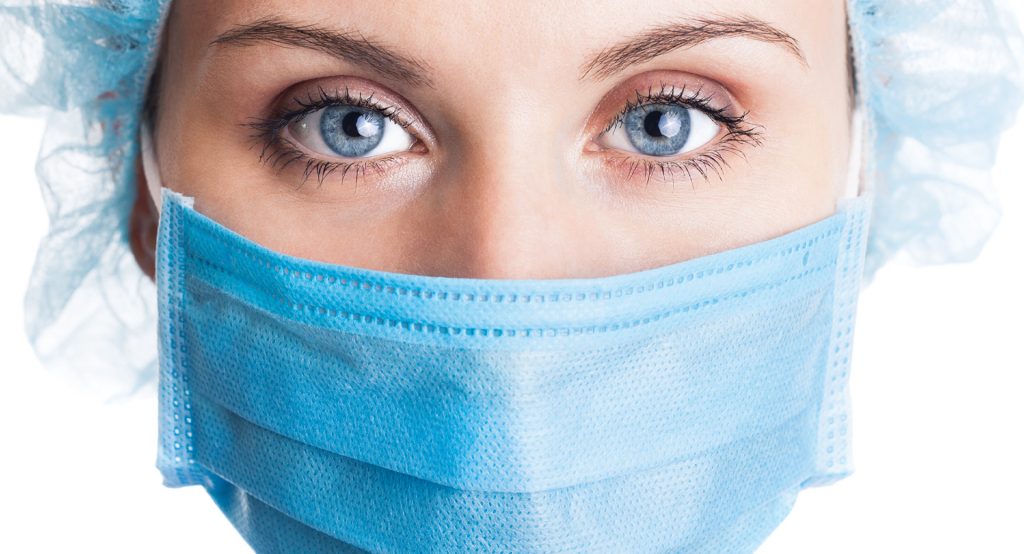
Some of the most distinctive elements of campus culture include co-inhabited living spaces, packed classrooms, noisy dining halls and shared resources such as gyms, labs and equipment. Mundane campus activities begin to look different during the coronavirus pandemic and when considering the reopening of schools. Risk of exposure and transmission chains become larger when considering the diverse, crowded and changing environments students navigate. While our previous article, Risk to Student Interns, reviews student risk generally, this article shares the unique perspective of an allied health student, including medical billing and coding, laboratory tech, medical assistant, occupational therapy, and pharmacy tech students.
Allied health students engage in general student activities. However, there are a series of distinctive allied health student activities that may increase risk of exposure and transmission rates. Some of these differences include simulation-based learning labs, on-site field studies and close contact with patients and other healthcare workers. The aforementioned activities are in addition to general student risks such as shared living spaces, communal transport and crowded classrooms.
Prior to visiting their field study site, allied health students used scenario-based training often in labs. These labs share equipment among groups of students who are simulating an allied health environment. These conditions make social distancing difficult and require routine cleaning and disinfecting of equipment. Necessary group work is often a facet of allied health education, even outside of the lab. Policy and procedure for labs and group work will need to be implemented to ensure health and safety measures are considered.
Additionally, allied health students participate in a clinical placement component during their education. Clinical placements are where the theory and skills taught in a lab are applied in actual allied-health environments. These environments are often in healthcare settings where the risk of exposure to disease, including the novel coronavirus, is higher. Risk of infection and transmission is high due to the nature of the work setting, including close contact with patients and other healthcare workers and the greater potential of coming into contact with hazardous materials.
Even though allied health students are not always working hands on with patients, they are still at higher risk in comparison to general students. Schools often lack complete oversight, especially when students are seeking their own clinical placement sites. This lack of oversight could result in students unintentionally taking on greater risk and as a result, greater exposure. Allied health students risk spreading the virus on campus, in their communities, at their clinical placement sites, and even between clinical placement sites. Allied health clinical placement sites will need confidence that students are not significantly contributing to nosocomial infection rates as this not only affects health outcomes, but it also impacts staffing levels and financial burden.1
It is well documented that healthcare-associated infections are a significant cause of morbidity and mortality in the United States.2,3,4,1 It is paramount that these risks are considered and that allied health students be given the proper training, protocols, policy and procedures to prevent the spread of the virus. This will reduce their risks of exposure and so they are able to supplement the sites already suffering staff shortages in a meaningful way.
A responsible plan for bringing allied health students back to campus, that accounts for the unique experience at clinical placement sites and within the lab, should be a condition. Additionally, institutions of higher education should prepare to enact a plan that supports testing, isolation, quarantine, contact tracing, reduced movement between multiple clinical placement sites and enhanced disease surveillance. This plan should foster strong communication with clinical sites. Furthermore, schools have a moral and ethical obligation to protect the health and safety of students, their communities and their partner organizations.
References
1. Revelas, A. Healthcare – associated infections: A public health problem. Niger Med J 53, 59–64 (2012).
2. Klevens, R. M. et al. Estimating Health Care-Associated Infections and Deaths in U.S. Hospitals, 2002. Public Health Rep 122, 160–166 (2007).
3. Health Care-Associated Infections | health.gov. https://health.gov/our-work/health-care-quality/health-care-associated-infections.
4. Haque, M., Sartelli, M., McKimm, J. & Abu Bakar, M. Health care-associated infections – an overview. Infect Drug Resist 11, 2321–2333 (2018).
written by DR. GEORGE ASTRAKIANAKIS and Mary Brannock, MS